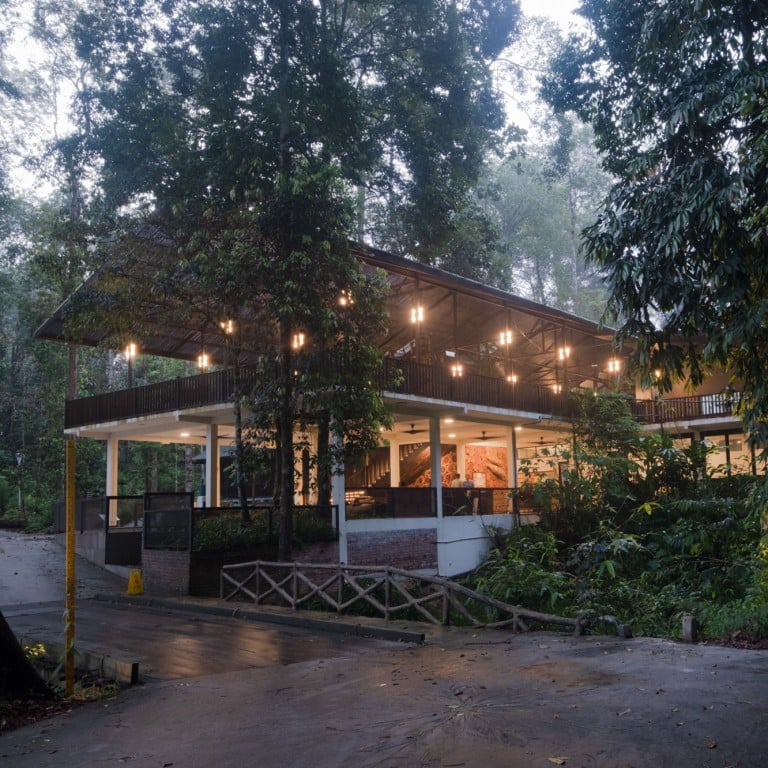
Feels like Jurassic era jungle: a stay in Malaysia’s new Rompin State Park showcases rare wildlife and offers creature comforts
- In Malaysia’s Pahang state, newly opened Rompin State Park is an area of primeval rainforest home to rare animals and endemic plants
- The upgraded reserve has a modern eco-retreat that offers a comfortable base from which to trek to pristine waterfalls; visitors can kayak or take a cruise too
Surrounded by the wide-leafed fan palm trees that grow only in this part of southern Malaysia, I feel like we’ve slipped back to Jurassic times. I wouldn’t be surprised to see a dinosaur walk past in search of ferns for breakfast.
Peninsular Malaysia’s most popular rainforest is Taman Negara (a name that means simply “national park”) but I am hiking in a lesser known patch of forest, Rompin State Park, a newly upgraded reserve in the southeasternmost corner of Pahang state.
Rompin State Park forms the northern portion of the Endau-Rompin national park, 870 square kilometres (340 square miles) of primeval rainforest that straddles the sloshing Endau River, a natural border between Pahang and Johor states.
Until recently, Endau-Rompin was most accessible from the Johor side, through the villages of Kampung Peta or Selai. However, the area flooded in March 2023 and many of the residents of Kampung Peta lost their homes, while Selai’s topography was radically changed.
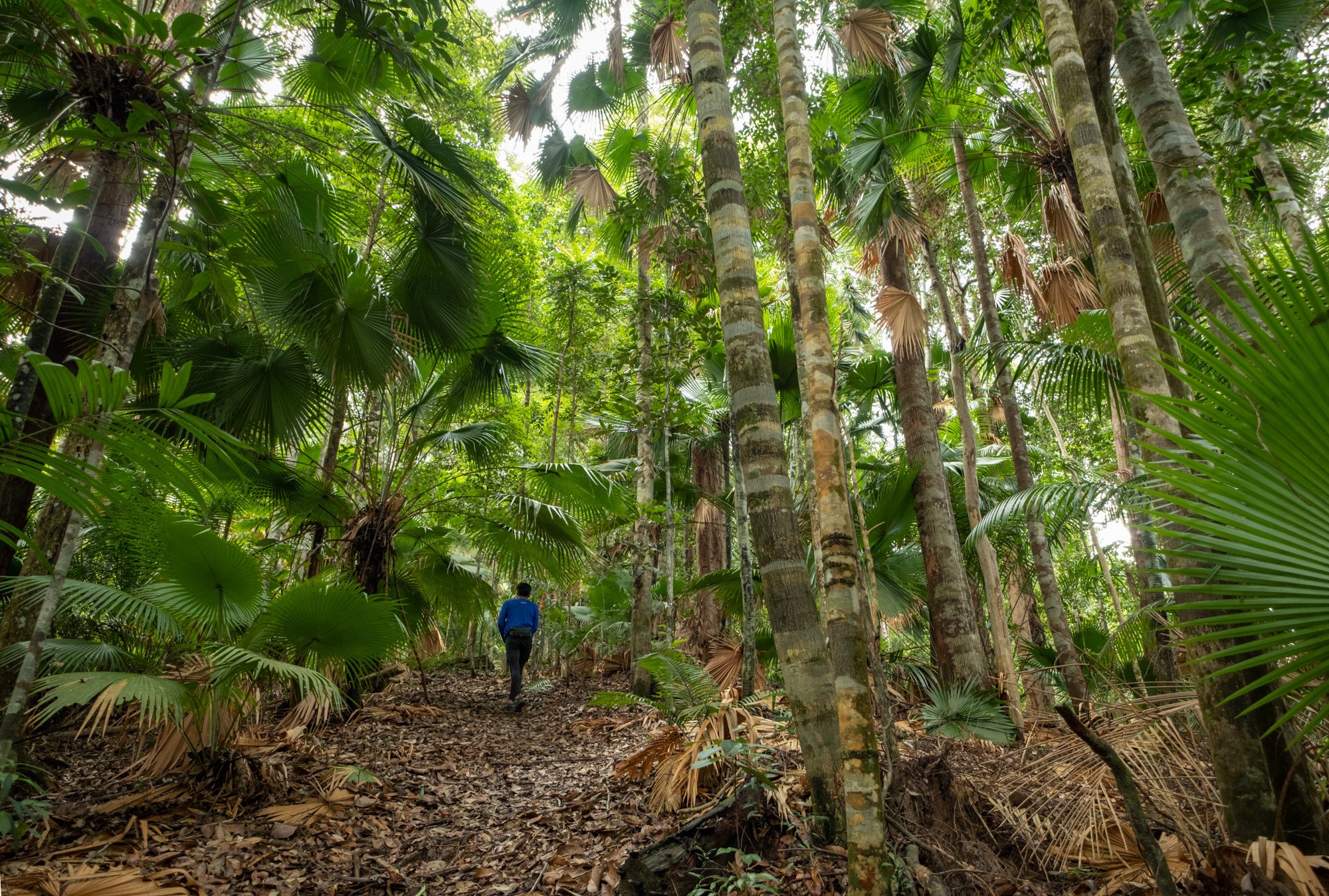
Kampung Peta, on the southern bank of the Endau, has reopened to tourism but Selai is still closed.
A silver lining has been the rise of the reserve’s Pahang section, which was rebranded as Rompin State Park in 2020 after having been closed for three years.

About a four-hour drive from Kuala Lumpur and three from Singapore, and easily reachable from the coastal town of Kuala Rompin along a well-paved road, the state park’s new highlights include a suspension bridge 80 metres (260ft) long over the Kinchin River and, at one of its ends, the 15-metre Kinchin watch tower, which affords views over the tree canopy.
The park is now managed by eco-tourism operator Rompin Park Resort, which also runs the Rompin Rainforest Lodge eco-retreat.
Built mostly of concrete mixed with upscaled wood, the lodge is set on a bend of the Kinchin and started operating fully at the end of 2022.
Malaysia neglects 2 million years of human history at Unesco heritage site
“[We now] cater to a broad range of visitors, from adventurous tourists to school groups,” says the lodge’s general manager, Wah Eng Hong.
“We aim to enhance Rompin State Park’s visitor experience by offering international standard overnight accommodation and dining facilities.”
The lodge’s 18 chalets are large and breezy, and big windows make the most of the riverside jungle location.
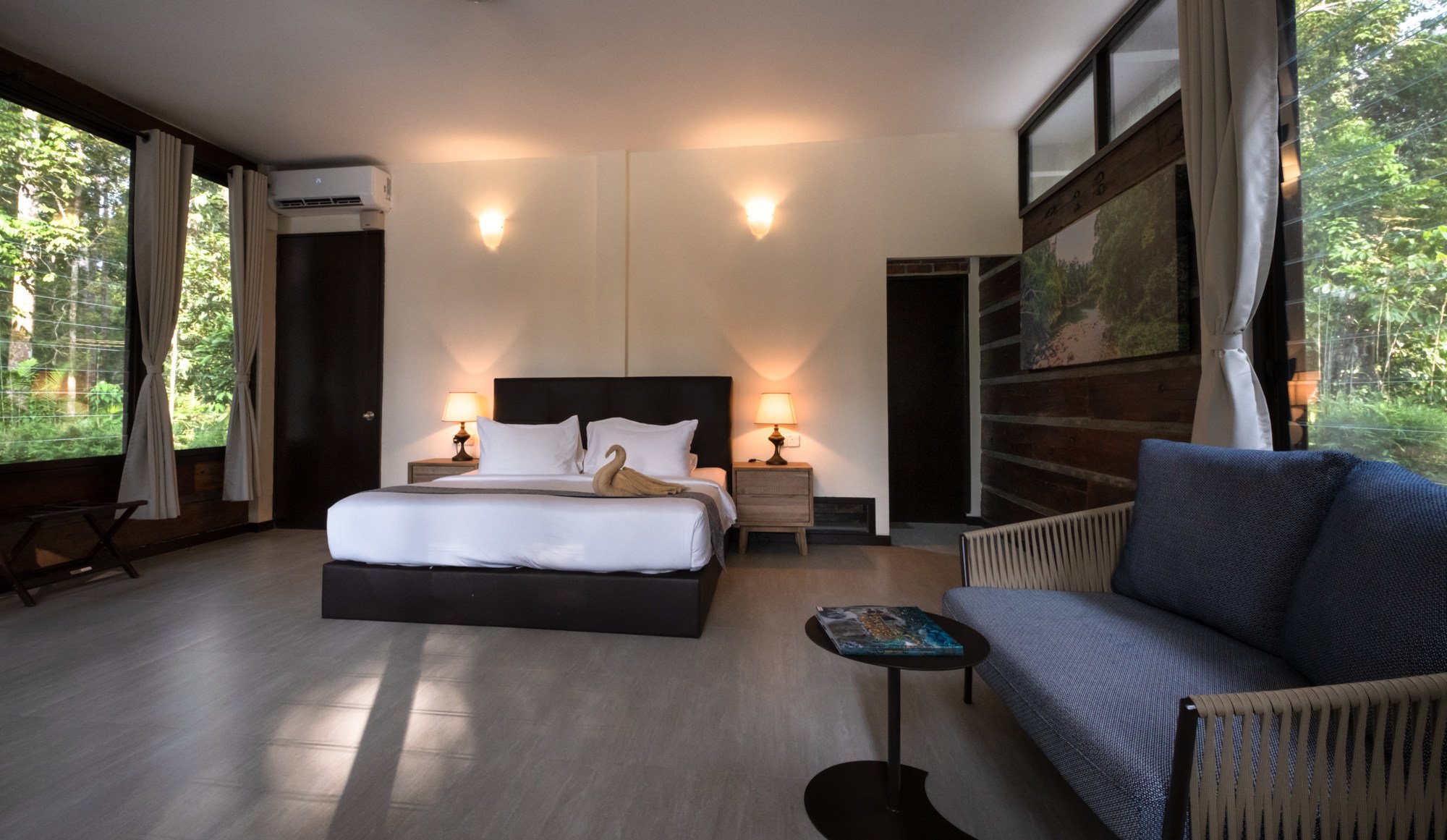
At the property’s heart is a two-storey lobby and restaurant, the spacious dining terrace of which is surrounded by tall tropical trees and doubles as an elevated viewpoint.
I don’t have to go far to enjoy the wildlife. On my first night, after dinner, I look up from the terrace into the darkening thicket and notice a strange bump protruding from a high spot on a tree.
As I get closer to the veranda’s railing, I realise it’s the back of a rare colugo, also known as a flying lemur, a nocturnal mammal that looks like a cross between a large bat, a squirrel and a fox, and can glide between trees thanks to the membranes connecting its hands and feet.
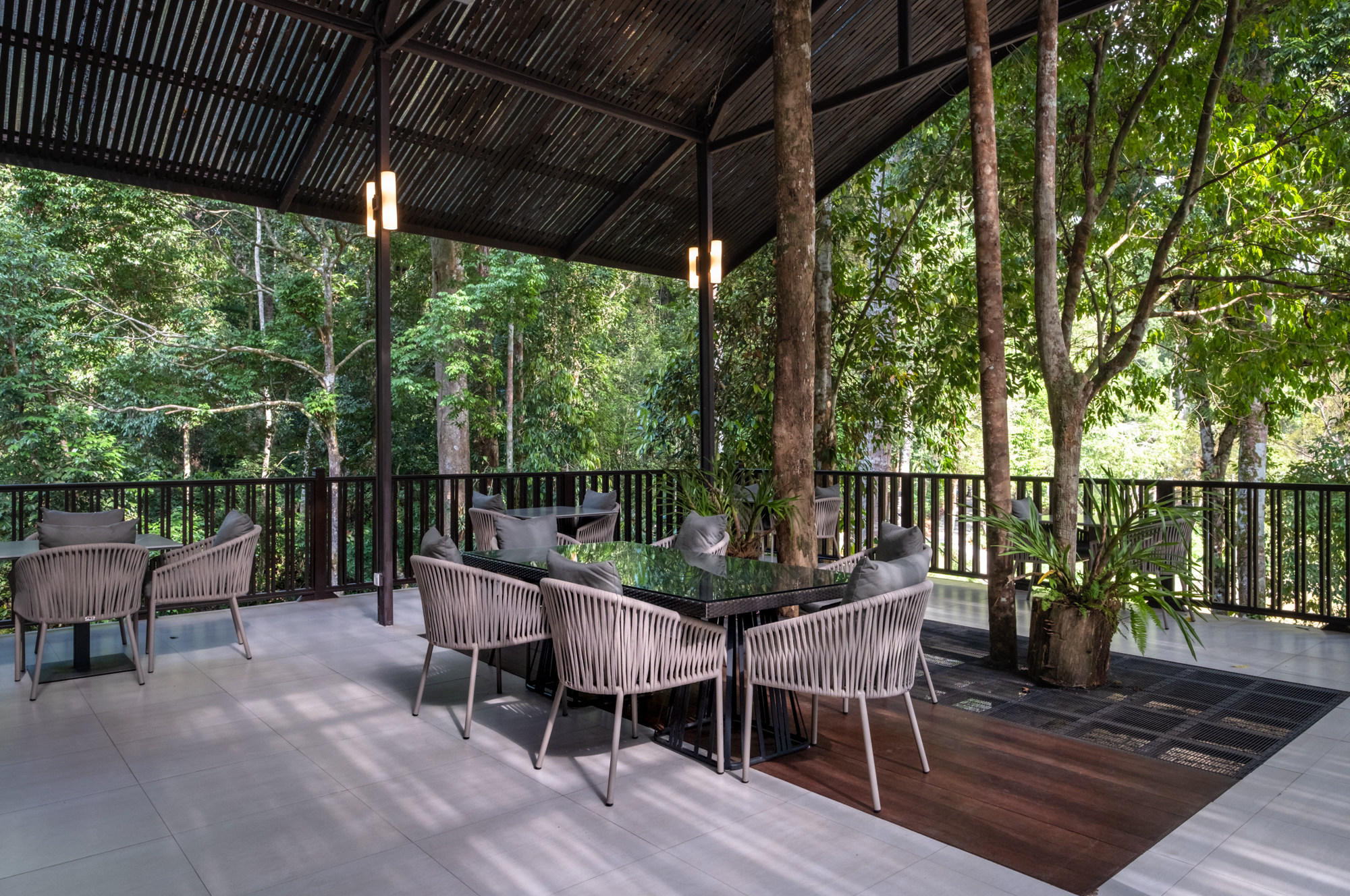
Colugos are usually very solitary animals – so imagine my surprise when my sighting turns out to be two, one hanging slightly above the first on the same tree. As my eyes adjust to the darkness, I spot four more, hanging from other trunks.
A couple of British travellers do not realise how unique this colugo bonanza is – at least until the flying lemurs start gliding across the trees, flipping and turning into the night, and disappear as mysteriously as they arrived.
Below the terrace is the lodge’s lobby, where guests register, pay the park conservation fee – 50 ringgit (US$11) for foreigners and 30 ringgit for locals – and book the guides that are compulsory for those wishing to strike out on the trails.

Day trippers may join guided activities that start either at 9am or 2pm, but given conservation fees are charged per entry, it’s best to spend at least one night in the park, either at the lodge or in one of several campsites.
The park’s easiest-to-reach attraction is Seri Mahkota, a 50-metre-high, three-tier waterfall set only a couple of kilometres from the lodge and the park headquarters.
They are reachable either by descending a set of steps from the main road or by trekking for about an hour from the lodge.

On a gentle 3.4km out-and-back jungle trek to the Jeram Panjang campsite, along the Kinchin River, elephant dung reminds us why it’s compulsory to follow a local guide.
At the Batu Sungai Maling Kempas bridge, our guide shows us a hollow Koompassia tree and explains that the local Orang Asli tribe would have used this vertical wooden pipe to funnel smoke signals to the sky from the humid jungle floor.
At Jeram Panjang, a side trail follows the Sungai Batu stream towards the Seri Mahkota waterfall. Twenty minutes later we’re at the base of the falls, contemplating a very welcome, large, deep plunge pool in which to cool off and swim.
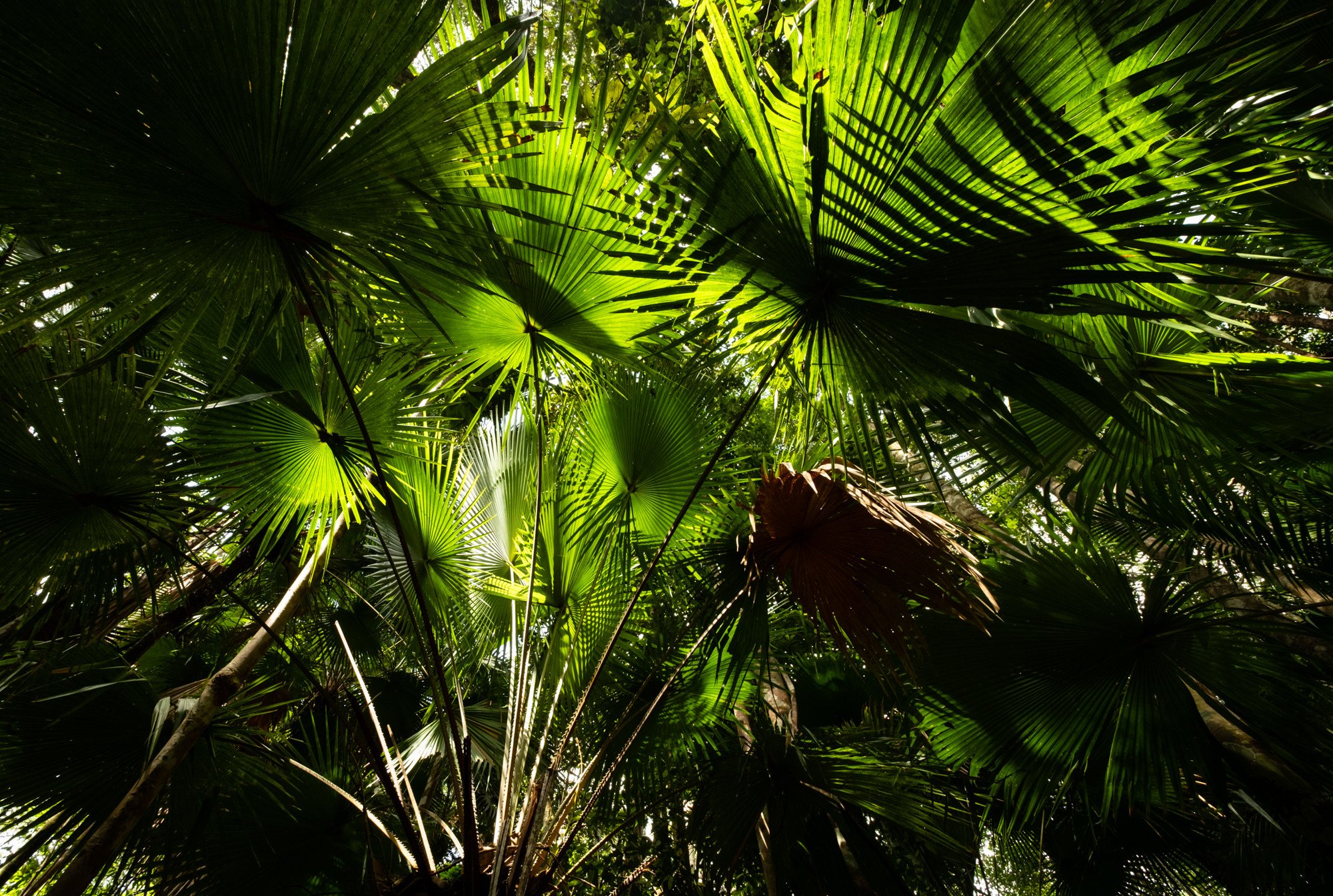
Fortunately, we’ve brought a picnic.
Another Rompin State Park trail, an ascent to the Padang Tujuh plateau, reveals how quickly the forest changes, with three distinct layers of vegetation packed into just 400 metres.
As I slog uphill behind my guide, fantasising about dinosaur encounters, Kapur trees and other broccoli-headed dipterocarps abruptly give way to thickets of Johannes palm and then to the round, wide, multi-feathered leaves of the endemic fan palm (Livistona endauensis).
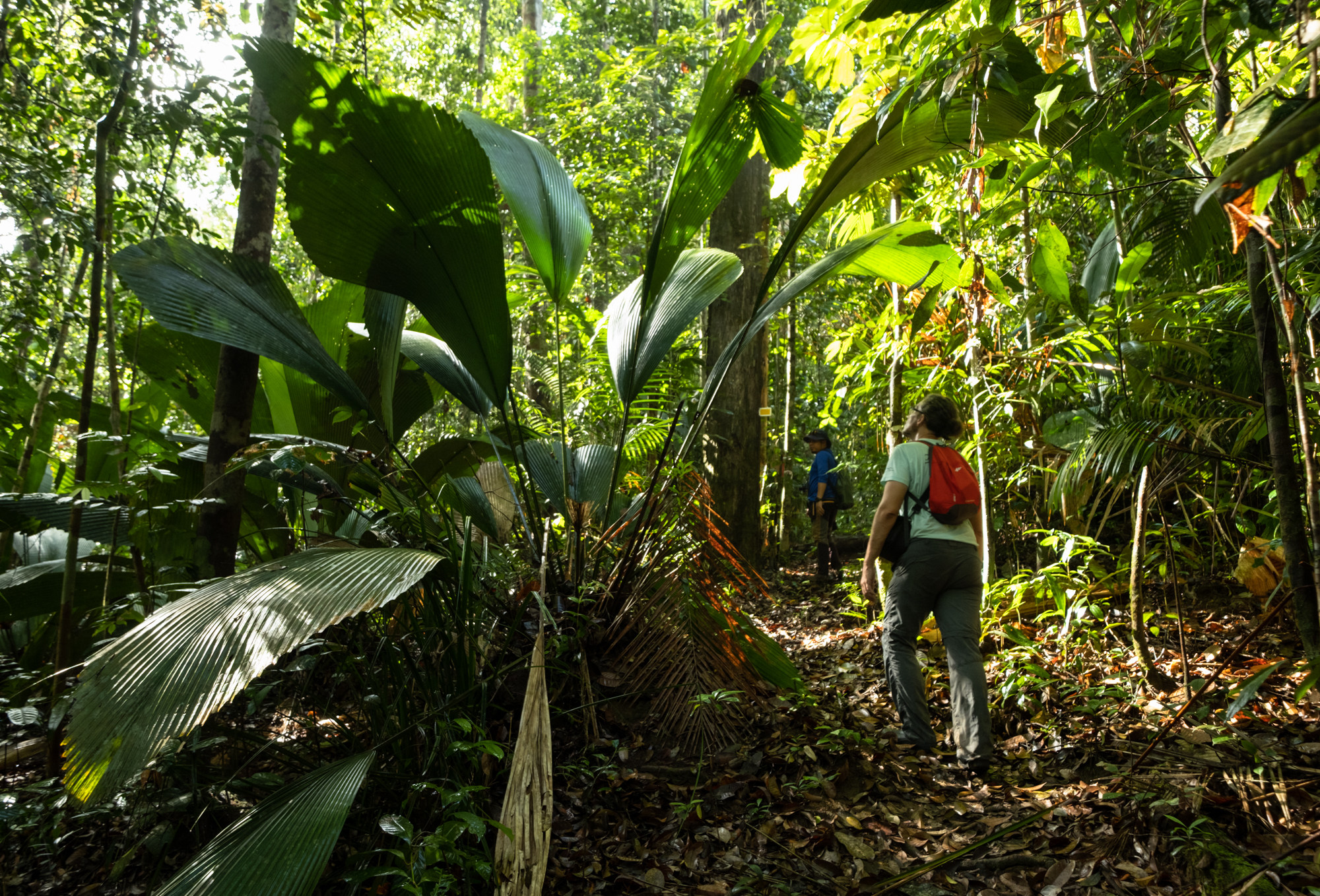
At the top is dry heath forest filled with trees familiar to any bonsai enthusiast, pitcher plants and dozens of beautiful wild orchids.
Non-hikers can enjoy the park by taking to the Kinchin River on a 5km-long cruise downstream on one of the lodge’s two longboats, each of which sits five guests, or by paddling the same distance upstream in a kayak.
The bankside forests are home to hornbills, eagles and rare monkeys such as the Raffles’ banded langur.

Rompin State Park may still exist largely under the radar, but the lodge is committed to building 16 more chalets this year.
“As 2024 will be our first full year of operation with full facilities opened, we hope to welcome more international visitors,” says Wah.

